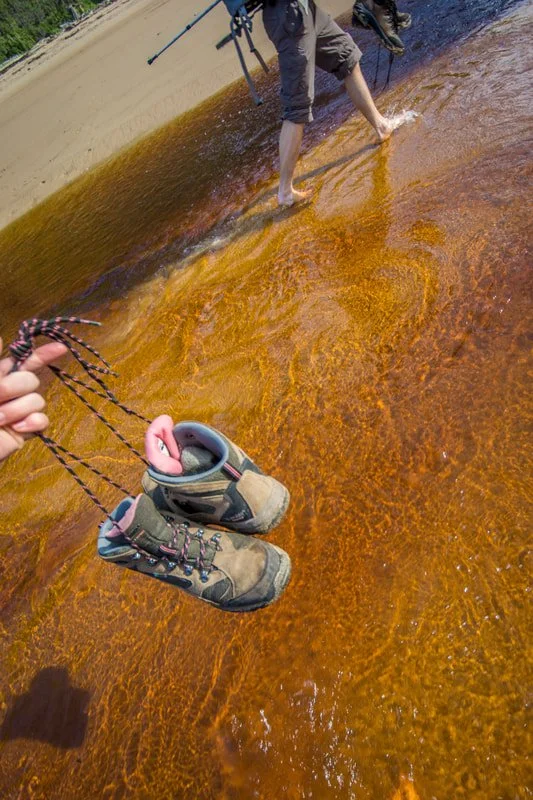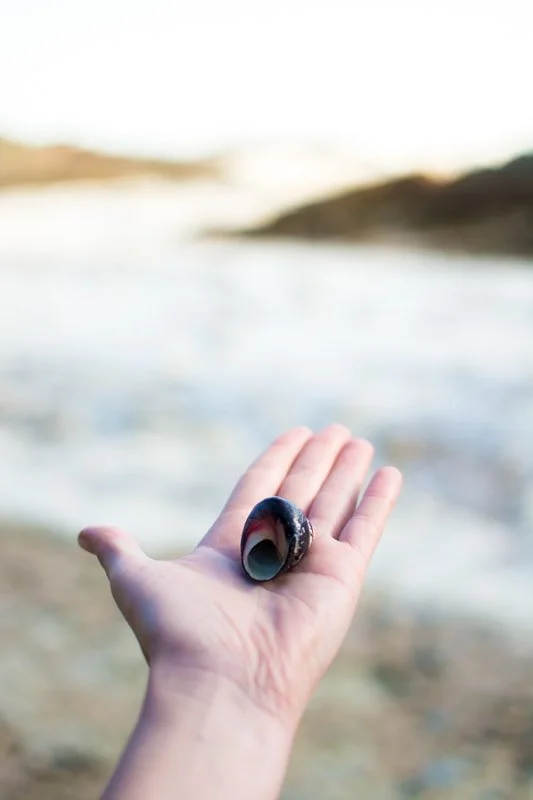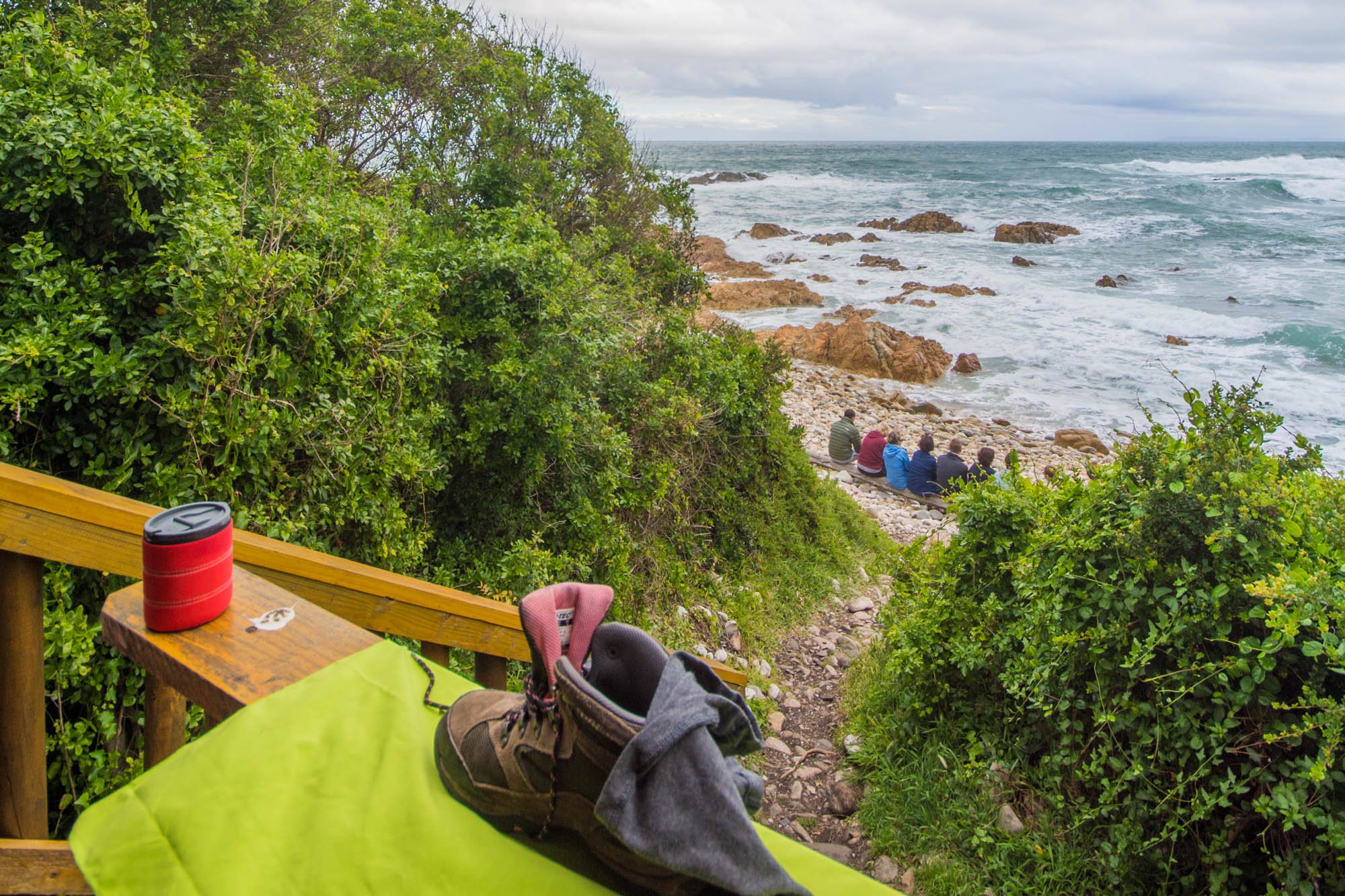Everything you need to know about the Otter Trail from a rookie
South Africa’s oldest and most iconic trail is easily one of the most enchanting too. Here’s our guide to doing it right.
What is it like to hike the Otter Trail for the first time?
On day two of the Otter Trail, clambering up what felt like the millionth step, I badly regretted packing the two-litre papsak of red wine.
Imagining idyllic fireside storytelling and sharing the indulgent bounty after a hard day's hiking, I cursed it furiously instead. It felt like every additional milligram was pulling my pack straight back down the near-verticle path. If only I'd known that a hiking calculation exists for working out precisely how much one can comfortably carry. A loaded backpack shouldn't weigh more than about 20 per cent of your body weight. If, for example, you weigh 60kg, your pack should not surpass 12 kilos – I was lugging almost 20kg.
However, once I'd eventually conquered the steep staircase, I stopped to appreciate the sublime surroundings. Usually, visitors drive the gorgeous Garden Route between Port Elizabeth and Cape Town to experience the region's Edenic bounty. Walking the Otter Trail takes you beyond the confines of a car and reveals a refreshingly unrestrained side to the Garden Route. Set in the Tsitsikamma section of the Garden Route National Park, this popular hike wends through dense indigenous forest, alternating between pebble-strewn beaches, sandy bays, fields of fynbos and rocky outcrops. All the while, hugging the coastline of a raging sea.
Now perched atop the staircase and on the edge of a rugged cliff face, I watched the ocean, tantalisingly untamed, crash against the black rock below. It was totally wild and free. 'Just like us', I thought (save for the straps that bound bags to back).
There's a distinct and easy path to follow, but the Otter Trail also has its fair share of slippery boulders, ropes and river crossings. Thank goodness for collapsible hiking poles. I snubbed them at first as unnecessary accessories, but I soon sand a different song. Walking is harder when a backpack could throw you off balance at any moment. The poles helped overcome the interminable flights of stairs and offered stability through the rocks.
Day two was demanding, but our tired group relished the red wine I'd lugged all the way from Woolies (and there’s no way I was carrying it another step further!) Each overnight stay is set in a seaside location worthy of a billionaire's beach house, but rather, two simple wooden huts offer sanctuary. Each one sleeps six on two triple-bunk beds (we soon learnt to avoid the top-most bunk and drag a mattress to the floor for a sound sleep instead), and there's a sheltered lapa for cooking or relaxing around the flames. Settled around the fire, beside picture-perfect cabins, we happily sipped from our camping coffee mugs.
Once the load was shared, and I made peace with my pack, I eased into the hiking groove. Without cellular reception, we traded social media for real companionship, connecting in more memorable, sincere ways. We swam in the Elandbos River and delighted in the sighting of a surprised otter. Then there was the dreaded Bloukrans River, which can swell up and deepen into a strenuous stream come high tide. We really had to trust one another to make it across safely.
Walking the Otter Trail, I realised, is kind of like walking through life. There will always be ups and downs, but with friends, fire and a goblet of wine, there's always something to celebrate. Even when it feels like you have the world on your shoulders.
How to book the Otter Trail
The Otter Trail is a five-day and four-night hiking trail that starts at Storms River Mouth and ends in Nature's Valley. It is operated by the South African National Parks and traverses protected land, alongside the county’s first Marine Protected Area.
Get a group of 12 hikers together and book the whole trail or secure one cabin with a smaller group of six for partial privacy. For last-minute trips, check online or call 012-428-9111 for availability. It costs from R1450 per person, plus a daily conservation fee of R68 for the five days. Book a year in advance to hike in the best weather conditions.
Other Otter Trail logistics to keep in mind
The nearest airports are Port Elizabeth, George and a ther’’s a smaller one at Plettenberg Bay, where car hire is available.
You’ll leave your car at De Vasselot Rest Camp (the end of the hike) and book a transfer to Storms River Mouth with Gecko Tours (from R150 per person for eight to 12 passengers, we used geckotours.co.za).
Also read: Otter Trail - Top Tips from the Mama Alles Community
The wettest months are May and October, while driest are June and July. It's hottest between December and February, and most likely to rain in August. The trail isn't extreme (unless you run it as the one-day Otter African Trail Run) but moderate strength and fitness is needed to tackle steep ascents or navigate rivers and rocks. It's also worth strapping on your backpack and tackling stairs with it fully loaded.
Accommodation is available at both Natures Valley and Storms River SANParks camps before and after the hike.
Also read: Everything about The Otter Trail Hike from this dedicated website.
Otter Trail Stats
Total distance 45km
Time needed Five days
Fitness required Moderate to good fitness required (many hills)
Trail status Green Flag
First launched January 1968
Top tip: Celebrate the end of the first day with a braai. Vacuum pack a stack, prepare a garlic bread and settle in around the fire. Wood and a grid is supplied.
Crucial Kit for the Otter Trail
Trekking poles: I used just one hiking pole, but they are often sold as sets of two (share the cost with a friend)
Lightweight, compact sleeping bag: I used thermals as pyjamas and rolled up my puffer jacket to use as a pillow.
Hydration bladder: it’s easier to sip and stroll simultaneously
Waterproof boots: if your shoes get wet on the first day, you’ll struggle through the whole hike when they don’t dry in adverse weather.
Survival bag: a big, waterproof sack to safely stow your pack in while crossing the Bloukrans River.
Headlamp: it’s much easier to cook hands-free! You also may have to hike in the dark when timing the hike to cross the Bloukrans River at low tide.








